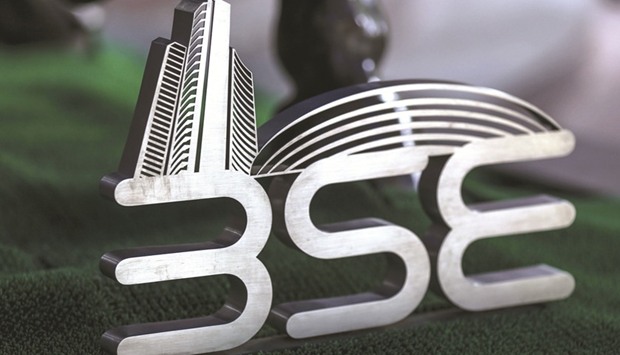The benchmark Sensex fell 1.51%, or 509.54 points, to 33,176. So far this year, it has declined 2.6%.
The NSE Nifty 50 Index fell 1.6% to 10,195.15. Jaguar Land Rover owner Tata Motors’ 3.7% decline was the steepest among Sensex members. CLSA India kept its sell rating on the stock, citing subdued sales expectation for JLR in the year beginning April 1.
The mid- and small-sized shares, which rebounded in the past four days from a sharp decline in 2018, also fell. Analysts expect volatility in Indian markets to continue amid a slew of key state elections this year and as investors continue to assess the impact of international trade wars and the prospect of higher domestic and global interest rates.
“Short-term risks for a downside persist even as occasionally local equities may just play a bit of catch up with their global counterparts,” said Andrew Holland, chief executive officer at Avendus Capital in Mumbai. Investors will also watch the impact of “trade wars, local polls, and an expected rise in interest rates and oil prices,” he said.
All the 19 sector gauges compiled by BSE retreated, led by the S&P Metal Index’s 2.3% drop. The NSE Volatility Index jumped 6.2%, extending its rise this year to 20%.
The S&P BSE MidCap and the S&P BSE SmallCap gauges have fallen nearly 9% in 2018, after capping at least 48% gains in 2017. The Sensex and the Nifty indexes have fallen more than 2.5% each in 2018.
Meanwhile the rupee closed little changed against US dollar.
The home currency ended at 64.94 a dollar, down 0.01% from its Thursday’s close of 64.93. The rupee opened at 64.97 a dollar and touched a high and a low of 64.85 and 64.99 respectively.
So far this year, the rupee has fell 1.65%, while foreign investors have bought $1.38bn in equity and sold $21.70mn in debt market.
India’s government bond yield yesterday closed at a one-month low after inflation eased and news report suggested that the government may raise limits on foreign investment in debt market.
The 10-year bond yield closed at 7.563% — a level last seen on 14 February, compared to its previous close of 7.633%. Bond yields and prices move in opposite directions.
This was the second session when the bond yield fell following a BTV report that said policy makers are in talks about a new framework for FII cap in govt bonds.
Earlier data from government showed that the retail inflation slowed for second consecutive month to 4.4% in February from 5.1% in January and 5.2% in December.
Wholesale price inflation also eased for the third straight month in February to 2.48% after touching an eight-month high in November, helped by a softer rise in food and fuel prices, government data showed on Wednesday.
Traders are now looking forward to Wednesday’s FOMC meeting for guidance on the Federal Reserve’s rate-hike path.

